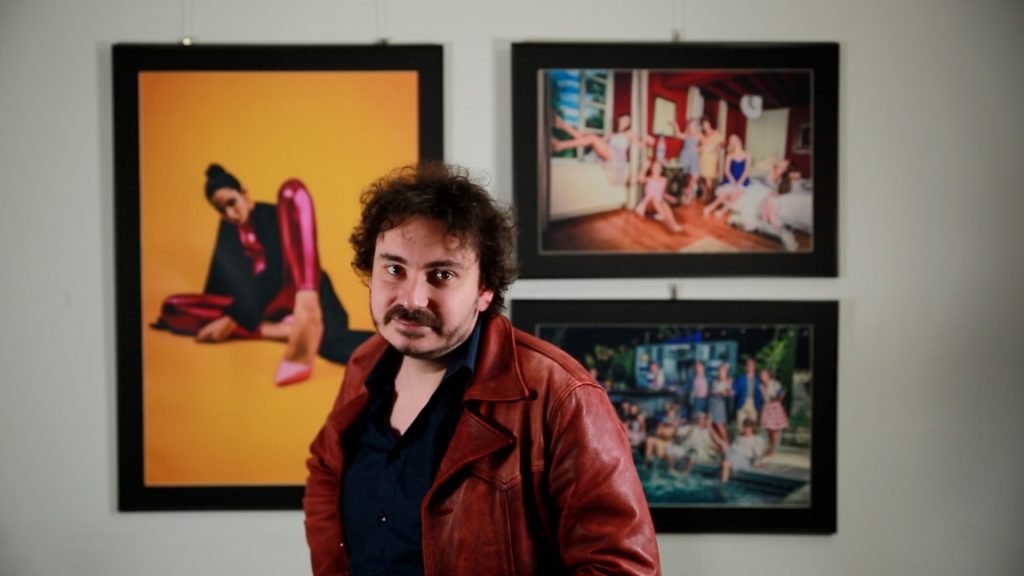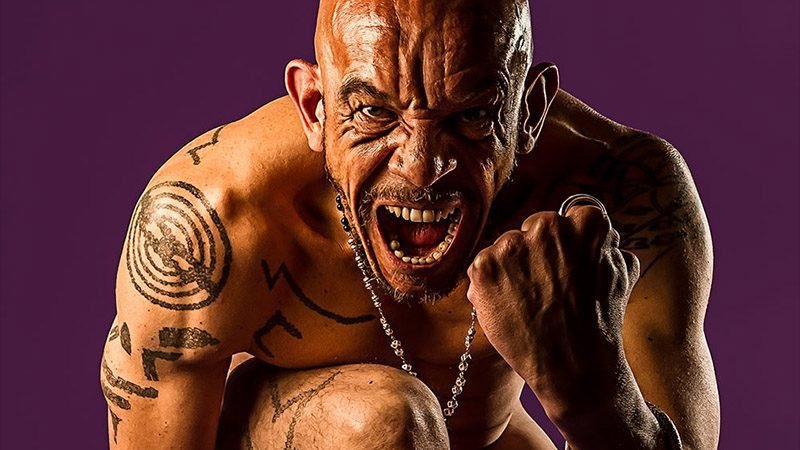INTERVIEW VIDEO
Choosing Who’s That Nude In The Living Room
Idan Wizen advises you in the selection of an artwork of the project
Face to face with the artist Idan Wizen With more than 2,300 photographs, the Who That Nude In The Living Room project is sometimes a victim of its own success: it is difficult to choose the photograph you want. To help us, the project’s founding artist, Idan Wizen, gives us some tips.
FIND OUT MORE
Would you prefer to read than watch a video?
Face to face with the artist Idan Wizen
Hello, I am Idan Wizen, the photographer of the project Who’s That Nude In The Living Room ? it’s a project that I founded in 2009 which now includes more than 2,200 photographs of 2200 different people.
This project has been declined in different collections through time. Changing graphic universes, a semantics which is added, but who will keep the same ideological basis which is based on three things the place of prudishness in society. Being able to show that a naked body isn’t necessarily pornographic, it’s not erotic and at the same time, to fight against the demonization of the body. The ideologies that make it absolutely necessary to hide it, it’s the idea of showing that bodies can be different and beautiful than beauty standards of advertising, and fashion.
And then, it’s a reflection on the attraction of a human about whom we know nothing that we have taken out of any socio-cultural context. And who is just there to talk to us, to make us dream. For each person who comes to pose, we will keep one and only one photograph. This photo, we will choose it together and it will exist in four prints each in a unique format. A small size that measures 20×30 cm to the largest, which is 80×120 cm.
Why collect artworks of the project Who’s That Nude In The Living Room ?
I believe in buying a photo and collecting photographs of the project, it is above all talk about these beings about whom we know nothing, it is looking at them when they have been taken out of any sociocultural context. We don’t have their name, we don’t have their age, we don’t have their profession, we don’t have their clothes either and clothing positions us socially and are never neutral. So it’s watching, this person almost his essence. Beyond everything, saying that we like it, who speaks to us, who makes us smile, who makes us dream, that will motivate us. It’s the purpose of art, watch a work that will tell us a story who will make us travel.
It’s hard to hang on a nude photograph at home, What do you think ?
Indeed, in addition to this image that makes us dream, which makes us travel, it is also using art as a means of transmitting our vision of things, our vision of the world and here more precisely, his vision of the body. Hang a Nude In The Living Room, it’s say, I think that the bodies are beautiful, even if they are different from stereotypes, standards, advertising, fashion. This means that nudity is not necessarily dirty. It is humanity as it is in its simplest device. It is to show that the human is totally diverse between each human, at the same time, with a certain distance we are all the same.
How to choose a photograph?
It is true that there are more than 2300 photographs on the site, it’s not always easy and obvious from all watch and choose. My first advice for sorting out would be to choose by format since we have unique pieces. There are quite a few formats that are no longer available and therefore already, it will limit a little, mainly if you want small formats who leave very quickly, generally. My second advice would be to choose by collection. We are going to have very clear, very drawn graphic universes, like Purity, things a little darker more worked like Pandemonium, or very pop and colorful things like Artificial Nature. It’s a question of taste, we want to see where we’re going to put them. It can help sort and easily reduce on a photograph depending on the collections you like.
Why an artwork more than another?
Once you have optionally chosen size and collection but not necessarily, I think you have to listen his heart, his gaze. What I find great is that since I did this, for over twelve years now, that I spend time with people to choose photograph, there are not two who will have the same crushes and i want to say, trust you, look at the photographs you like a look, a smile, an attitude, that’s a whole. And I believe that’s what’s important, it is you who will hang it and see it everydays.
Another selection advice ?
First of all, my advice would be to choose according to your emotions, your own gaze. But if you have a particular desire on the theme of humor, if you want photographs of an elderly person or people who assume their body, on will try on the site, to have presets. It’s just our tastes, and that’s obviously very subjective. But it already allows to have a first selection and you can create a collection on a thematic more than a graphic collection.
By purchasing an artwork of the project,can we say that is a financial investment ?
A financial investment, I cannot promise you. All the prints we make are made of museum quality, it is prints which are signed, which are numbered, therefore it is an artwork in the technical sense of the term. Regarding the overall interest that there may be and resale, yes, maybe, but that will rather be my reputation, my image which will give a rating over time and according to people who want to get them back. The more you will support the project, the more it will work.
One last tip?
Of course, I’ll even have three. The first is take a walk on the site, take time to look at the photographs and then you can put them aside. You have a feature to add them to favorites, to then on your account, watch his favorites, sort them, organize them as you wish.
My second tip it would be thinking of collections and compositions, whether on the same graphic collection or on several collections. The photos also speak more when there are several and that they respond to each other.
And then, my last advice is, do not hesitate to come and see me or in any case, make a collector appointment I make them either in video call or studio appointment. The idea is, whatever your budget, whatever size you want to do as composition, we will watch and work together. I will make you some simulations proposals. It’s generally a pleasant moment to spend, so do not hesitate.









